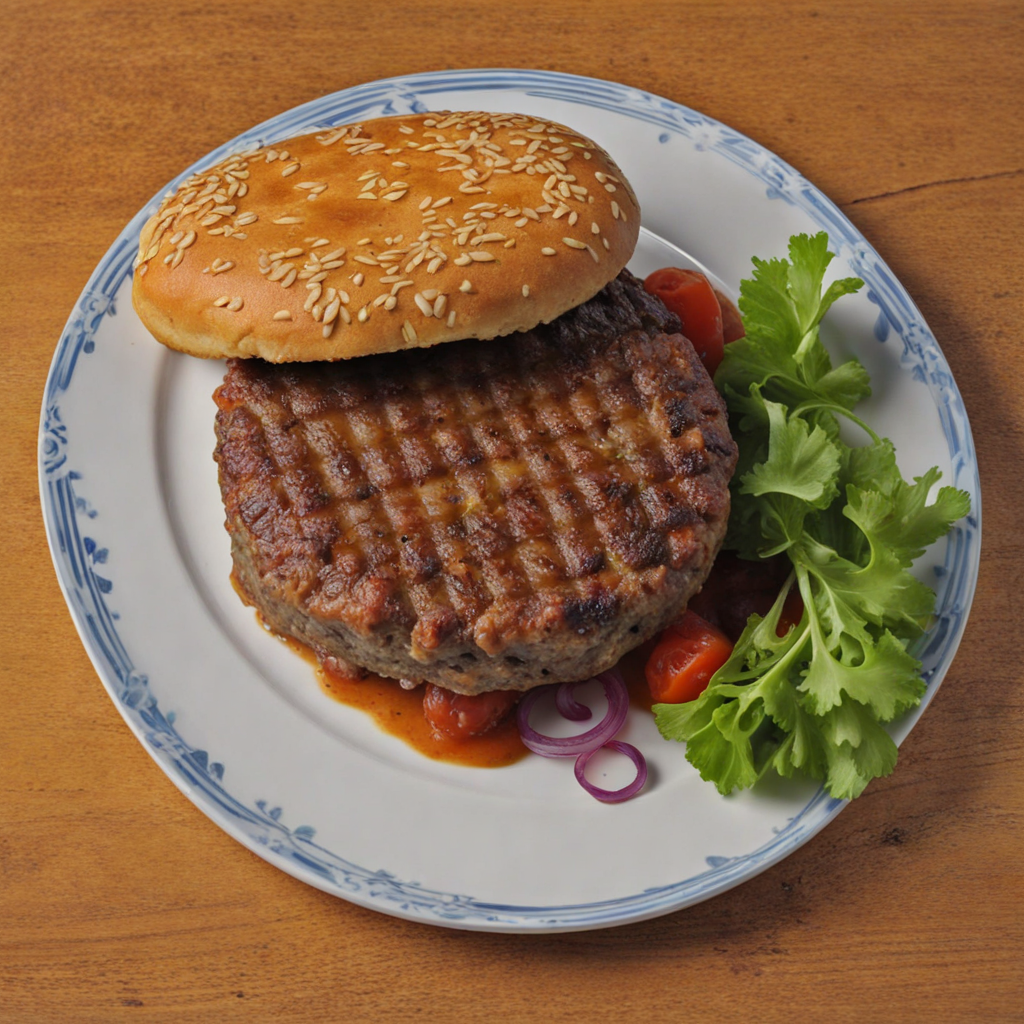Sujuk
Sujuk is a traditional dried sausage that embodies the rich culinary heritage of Kosovo, making it a must-try for anyone looking to explore unique flavors. This delightfully spiced sausage is typically made from high-quality beef or lamb, seasoned generously with a blend of spices such as garlic, paprika, and black pepper. The mixture is then encased in natural hog casings, giving it a robust texture that perfectly complements its rich, meaty flavor. The process of air-drying enhances its taste, resulting in a savory and slightly tangy profile that lingers on the palate, inviting you to savor every bite. The preparation of Sujuk is an art in itself, often passed down through generations. The careful selection of spices contributes to its distinctive taste, while the slow curing process deepens its flavor, creating a complex interplay of savory and aromatic notes. When sliced thinly, Sujuk reveals a deep red color, indicative of the paprika used in its making. It is often enjoyed on its own as a snack, paired with cheese and olives, or served with fresh bread, making it a versatile addition to any meal or gathering. In addition to its delightful flavor, Sujuk holds cultural significance in Kosovo, often being featured during festive occasions and gatherings. The sausage is not just a food item; it represents a sense of community and tradition, bringing people together over shared meals. Whether enjoyed as part of a charcuterie board or incorporated into hearty dishes, Sujuk is a flavorful exploration of Kosovo's culinary landscape that promises to leave a lasting impression on your taste buds.
How It Became This Dish
The History of Suxhuk: A Culinary Gem of Kosovo Origins of Suxhuk Suxhuk, a beloved delicacy from the Balkan region, particularly Kosovo, is a type of dry sausage that embodies the region's rich culinary heritage. Its origins can be traced back to the Ottoman Empire, which left an indelible mark on the food culture of the Balkans. The Turks introduced various methods of preserving meat, notably through drying and smoking, which were essential for survival in a time before refrigeration. The word "suxhuk" itself is derived from the Turkish word "sucuk," referring to a similar type of sausage. However, the unique blend of spices and preparation methods in Kosovo distinguishes its suxhuk from other varieties found across the region. Traditionally made from beef, lamb, or a mixture of both, suxhuk is seasoned with a variety of spices, including garlic, salt, pepper, and sometimes a hint of paprika or cumin, which give it a distinctive flavor profile. Cultural Significance Suxhuk is more than just food; it is a symbol of hospitality and community in Kosovo. It often graces tables during festive occasions, family gatherings, and celebrations, reinforcing its role as a cultural artifact. The preparation of suxhuk is typically a communal activity, involving family members who come together to grind meat, mix spices, and stuff the sausage casings. This process not only strengthens family bonds but also preserves traditional culinary techniques passed down through generations. In Kosovo, suxhuk is often served as part of a meze platter, accompanied by cheeses, olives, and fresh bread. This reflects the broader Mediterranean tradition of enjoying food as a social experience. The dish’s savory taste and firm texture make it an ideal component of various meals, whether served cold, sliced thin, or cooked on a grill. It is also popular for picnics and outdoor gatherings, showcasing its versatility and adaptability to different culinary contexts. Development Over Time Throughout the 20th century, the sociopolitical landscape of Kosovo and the wider Balkans underwent significant changes, impacting traditional food practices. During the Yugoslav era, the region experienced a blending of culinary traditions as people from different ethnic backgrounds interacted and shared their food cultures. This period saw the popularization of suxhuk beyond its local roots, as it became more widely recognized and appreciated across former Yugoslav territories. As Kosovo declared independence in 2008, there was a renewed interest in national identity, which included a revival of traditional foods like suxhuk. Culinary heritage became a means of expressing cultural pride and unity among Kosovars. Chefs and home cooks alike began to emphasize the importance of using local ingredients and traditional methods, ensuring that suxhuk maintained its authentic flavor while adapting to contemporary tastes. In recent years, the globalization of food culture has introduced new influences, leading to modern interpretations of suxhuk. Some chefs experiment with different meats, such as wild game, and innovative spice blends. Additionally, the rise of artisanal food movements has encouraged small-scale producers to craft high-quality, hand-made suxhuk, often emphasizing organic and locally sourced ingredients. This movement has revived interest in traditional recipes while catering to a new generation of food enthusiasts who appreciate authenticity and sustainability. Suxhuk in Contemporary Cuisine Today, suxhuk remains a staple in Kosovar kitchens and is increasingly featured in restaurants that celebrate the region's culinary heritage. As tourism grows in Kosovo, visitors are discovering the joys of traditional foods, with suxhuk often highlighted in culinary tours and local markets. The resurgence of interest in Balkan cuisine has positioned suxhuk as a must-try dish for anyone exploring the flavors of the region. Moreover, the digital age has played a significant role in the promotion of suxhuk. Social media platforms allow food lovers to share recipes, cooking techniques, and personal stories about this cherished dish. Food blogs and cooking shows often highlight traditional dishes like suxhuk, bringing it to a broader audience and encouraging home cooks to embrace its preparation. Conclusion Suxhuk is more than a simple sausage; it is a reflection of Kosovo's complex history, cultural significance, and culinary evolution. From its Ottoman roots to its place in contemporary Kosovar identity, suxhuk embodies the spirit of community, tradition, and innovation. Its rich flavor and storied past resonate with both locals and visitors, making it a culinary gem that continues to thrive in the heart of Kosovo. As the world becomes increasingly interconnected, the appreciation for traditional foods like suxhuk serves as a reminder of the importance of culinary heritage in shaping identity and fostering connections among people. Whether enjoyed at a family gathering or a fine dining establishment, suxhuk remains a testament to the enduring power of food as a vehicle for culture and community.
You may like
Discover local flavors from Kosovo







